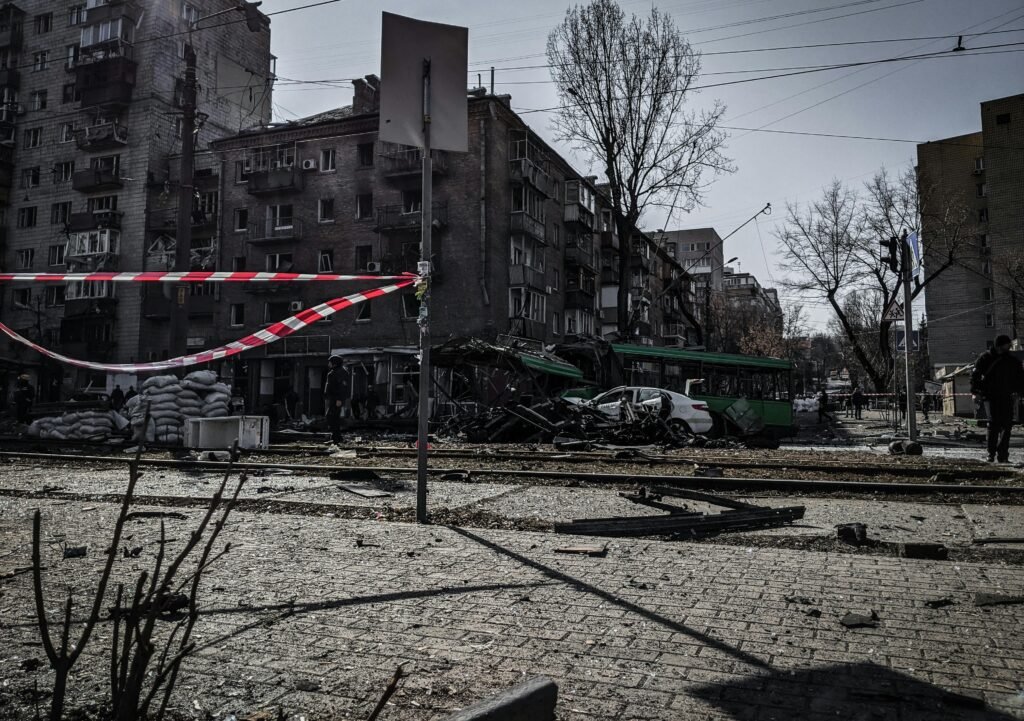Since the outbreak of the Russia-Ukraine conflict in February 2022, the war has triggered one of the largest and fastest-growing refugee crises in modern history. As cities were shelled and civilian infrastructure collapsed, millions of Ukrainians were forced to flee their homes in search of safety. According to the United Nations High Commissioner for Refugees (UNHCR), more than 14 million people have been displaced, including over 6 million refugees across Europe and approximately 3.7 million internally displaced persons (IDPs) within Ukraine itself.

The Scale of Displacement
The conflict has reshaped the demographic and humanitarian landscape across Europe. Poland, Germany, and the Czech Republic have received the highest number of Ukrainian refugees, with Poland alone hosting over 1.6 million as of early 2024. Other countries, such as Romania, Slovakia, and Moldova, have also responded rapidly with temporary protection mechanisms and open-border policies, allowing refugees to enter without visas or lengthy asylum procedures.
Internally, Ukrainian cities like Lviv and Dnipro have become hubs for displaced families fleeing the eastern and southern frontlines. These IDPs often live in overcrowded shelters, temporary housing, or with host families—many without consistent access to healthcare, employment, or education. Humanitarian organizations like the International Organization for Migration (IOM) and Médecins Sans Frontières (MSF) have mobilized relief operations, but the scale of the crisis continues to strain resources.
Legal Protections for Ukrainian Refugees
European countries invoked the European Union’s Temporary Protection Directive for the first time in March 2022, granting Ukrainian refugees the right to live, work, and access social services for up to three years without undergoing the typical asylum process. This unprecedented move provided immediate safety and legal recognition to displaced Ukrainians, many of whom are women and children, due to martial law in Ukraine restricting men aged 18–60 from leaving the country.
However, not all refugees have experienced equal treatment. Reports from NGOs such as Amnesty International indicate that African, South Asian, and Roma individuals attempting to flee Ukraine faced discrimination and delayed entry at some European borders. These cases highlight the ongoing need for equitable refugee policies that apply universally, regardless of nationality or ethnicity.
Impact on Host Countries
While the humanitarian response has been commendable, the sudden influx of millions of refugees has put pressure on housing, healthcare, education systems, and labor markets in host countries. In Germany, for example, the refugee population increased by over 1 million in less than a year, prompting the government to invest in emergency shelters, language training, and job placement programs. Similarly, Polish schools had to absorb over two hundred thousand Ukrainian children and youth, requiring rapid curriculum adaptation and bilingual instruction.
Economically, however, the refugee integration has presented long-term opportunities. Ukrainian refugees, many of whom are highly educated, are contributing to host economies through skilled labor. Countries facing aging populations and labor shortages, like Germany and the Netherlands, are beginning to recognize the potential demographic benefit of integrating refugees into their workforce.

Long-Term Migration Trends and Outlook
As the war enters its third year, the return of refugees remains uncertain. Despite Ukrainian government efforts to encourage return and reconstruction, security risks, destroyed infrastructure, and a lack of jobs deter many displaced people from going home. The longer the conflict continues, the more likely it is that temporary displacement will evolve into permanent resettlement, particularly for families with children already integrated into European schools and communities.
This shift has significant implications for long-term migration patterns in Europe. It may lead to a reshaping of immigration policies, increased demand for naturalization programs, and broader public debates about refugee integration. The crisis also serves as a warning for future conflicts: the global system needs better preparedness, inclusive refugee frameworks, and international cooperation to manage large-scale displacement.
How SwiftPass Global Immigration Supports Displaced Persons
While SwiftPass Global Immigration primarily serves Kenyan and African clients pursuing opportunities to study, work, or travel abroad, we also understand the complexities surrounding forced migration and displacement. For individuals affected by conflict—whether seeking humanitarian protection, asylum, or resettlement—SwiftPass offers guidance on identifying legal migration pathways to safer destinations.
We help clients assess eligibility for humanitarian or refugee visas, provide support in compiling compelling documentation, and connect them with organizations offering aid and legal representation. Our mission is not just to move people, but to protect their dignity, safety, and future in times of global crisis.
In a world where geopolitical instability increasingly drives migration, SwiftPass Global Immigration remains committed to informed, ethical, and empathetic immigration support.